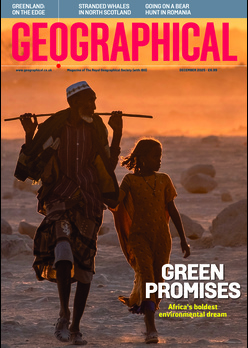
New research reveals that we’ve greatly underestimated the number of species that live underground
By
People don’t have a particularly intimate relationship with soil,’ says Mark Anthony. ‘For many, it’s invisible.’ Most of us, when thinking about hotspots of biodiversity, are likely to picture places such as the Amazon or a coral reef. In reality, some of the most impressive hotspots can be found beneath our feet. Until recently, scientists had estimated that around 25 per cent of the world’s species lived in the soil – we now know it’s more than double that figure.
Anthony is an ecologist at the Swiss Federal Institute for Forest, Snow and Landscape Research and co-author of a recently published study that reveals soil to be the most biodiverse habitat on the planet, home to 56 per cent of all life. He explains that what sets this new research apart from the only previous estimate – which he calls a ‘really rapid survey’ – is a much more comprehensive review of some of the smallest soil organisms: fungi, bacteria, viruses, protists and nematodes. ‘These are the most speciose groups, so it’s critical that we understand their biodiversity distributions.’
Of the groups they investigated, the researchers found that those with the largest reliance on soil include the Enchytraeidae (a group of pale mini earthworms) – 98.6 per cent of which live in the soil – and fungi. In comparison, just 3.8 per cent of all mammals spend some of their lives underground.
However, for some of the most species-rich groups, the study’s estimate error ranges are staggeringly large; for bacteria, figures range from as low as 22 per cent to as high as 88 per cent. ‘When we put all of our estimates together, we get to around 50 per cent,’ says Anthony, ‘but with that huge error range, we just have to accept that we don’t know the exact number for some really important groups right now. It shows a real need for greater research, particularly in the Global South, but also in deeper soil, where we know that there are unique species that we’ve never characterised before.’
This kind of research is essential, explains Anthony, because these species perform important functions – and they face a growing threat. Since the Green Revolution – a period from the early 1900s to the 1980s that saw a significant increase in agricultural production – soil fertility has plummeted, leading to an increased reliance on fertilisers. This overuse of chemical fertilisers, combined with the pollution from fossil fuel combustion, has further damaged soil and the organisms in it. Yet it’s this living component of soil that drives elemental cycling – the breakdown of organic matter and carbon sequestration – and has provided us with sources for new antibiotics and other medicines.

‘Soil is critical for our earth system,’ says Anthony. ‘It holds more carbon than the atmosphere and vegetation combined, and then doubled. It’s the base that supports all of our food and fibre production. Without healthy soil, it becomes increasingly challenging to grow crops, something we’re learning now, because of this intense agricultural production.’
Despite this, conservation efforts largely fail to include soil biodiversity. ‘It’s likely that more than half of life lives in soil,’ Anthony says, ‘yet these species are barely represented on any of the key lists [such as the IUCN Red List] that are used to inform conservation policy.’
Anthony says that there isn’t a perfectly clear answer as to why soil conservation is so limited, although he suspects that unlike charismatic megafauna that draw attention and funding, the small scale of soil organisms makes them less captivating to the public and policymakers. Consequently, research efforts and conservation initiatives tend to focus on more visible components of ecosystems, leaving soil biodiversity in relative obscurity. ‘That doesn’t mean that we should compare a soil bacterium to an elephant,’ he adds. ‘They both have different values. We just need to make room for them all to be important.’
Another likely reason stems from the simple fact that, for a long time and even today, it can be a challenge to detect what’s living in soil. ‘It’s only in the last few decades that we’ve been able to use environmental DNA to more comprehensively study the organisms that live in soil, so we’re really just beginning to characterise this biodiversity,’ says Anthony. ‘But it’s now time we make a case for its conservation.’ l




